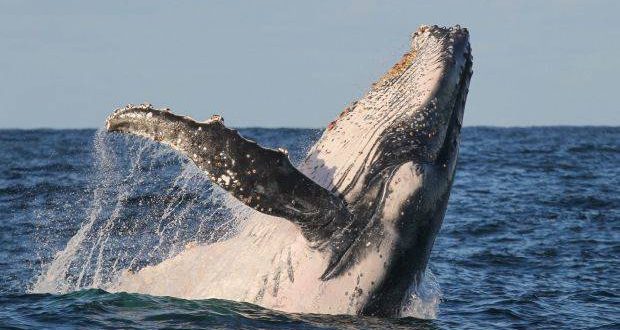Millions of years ago, whales looked very different from the gentle giants we know today. They were comparatively small (about three to five meters long, or 10-16 feet) and had a battery of formidable teeth.
The international study, headed up by researchers from Monash University in Australia’s Victoria, was the first to find that ancient whales possessed teeth that were incredibly sharp — meaning they used to hunt for large live prey.
Alistair Evans, a professor from the Monash School of Biological Sciences told Xinhua on Wednesday that the process to discover this extraordinary revelation involved cutting-edge technology, including 3D scanners.
“We found fossils and museum specimens of teeth – particularly things like fossils of whales, and carnivores like lions and dogs – and then we used 3D scanners, which can be laser scanners that scan the surface of the object, or an X-ray CT scanner like a cat scan what you have in a doctor’s office,” Evans said
“Then we got a 3D computer model that we could use, and used software to measure how sharp the different parts of a tooth were, and so our objective was to find out whether fossil whales had sharp teeth, or blunt teeth, to work out how they would have caught their food.”
What the team discovered was that whales were previously much like common land predators that are abounds today, and Evans and his team speculate that the process of whales losing their teeth was one which involved a few key steps.
“So what we think is that we had animals (whales) that were predators, they were able to grab things with their teeth, but when they grabbed some food they also likely sucked it in,” Evans said.
“So they sucked in the water around the food, and so if you do this for a long time you no longer need your teeth anymore and you concentrate more on the suction part, and so eventually, you lose your teeth.”
Evans said that most toothed whales these days “don’t have many teeth at all”, and even the ones which do, have much smaller teeth than what would be required to grab things easily.
“Once you start sucking in food a lot you can concentrate on catching smaller prey, and then to make sure that when you expel the water out of your mouth you need to trap that small food, and so the gums of whales became more elaborate, and sort of folded,” Evans said.
“Then from that you can produce things like hair, and it becomes baleen. So you go from teeth, through to suction, through to baleen.”
But, Ewan Fordyce, a professor in paleontology at the University of Otago in New Zealand said that questions still remain as to how these majestic creatures of the sea evolved precisely, from ancient times until the present.
“Our fossil finds and this new research suggests first they had teeth, they became suction feeders, they lost their teeth, and then they evolved baleen to help them retain the small foods they were catching by suction,” Fordyce said.
“What we don’t have now is the animals from that actual transition. We’ve got the precursors, and we’ve got fossils which were clearly baleen-bearing. What we really need is something in between.”
Agencies/Canadajournal
 Canada Journal – News of the World Articles and videos to bring you the biggest Canadian news stories from across the country every day
Canada Journal – News of the World Articles and videos to bring you the biggest Canadian news stories from across the country every day



